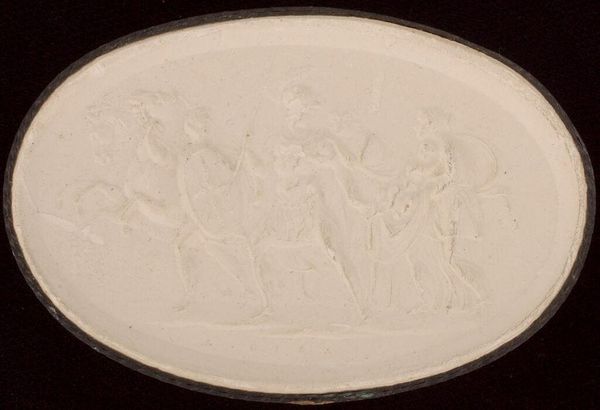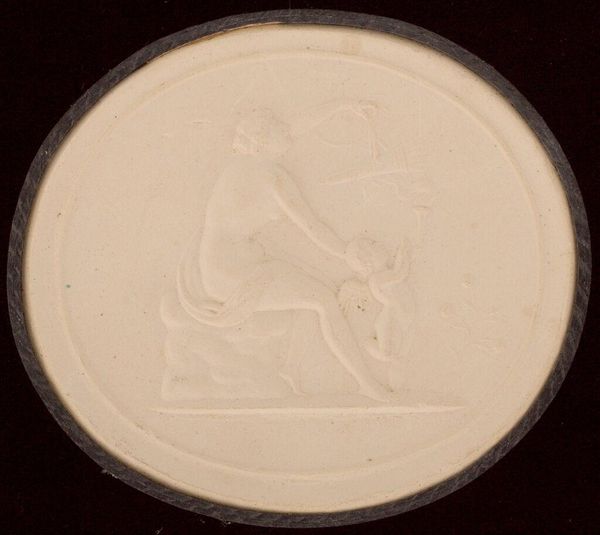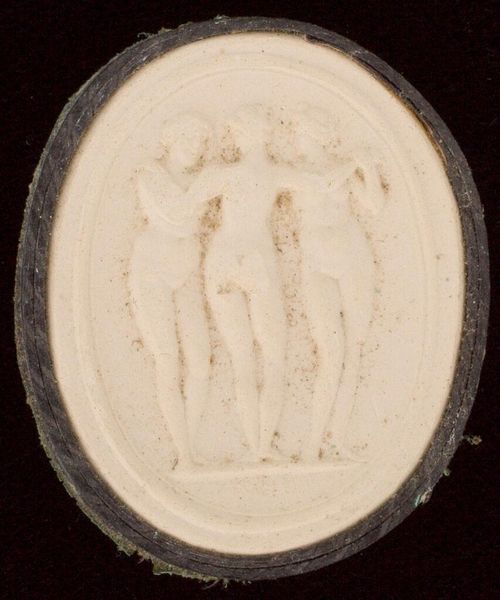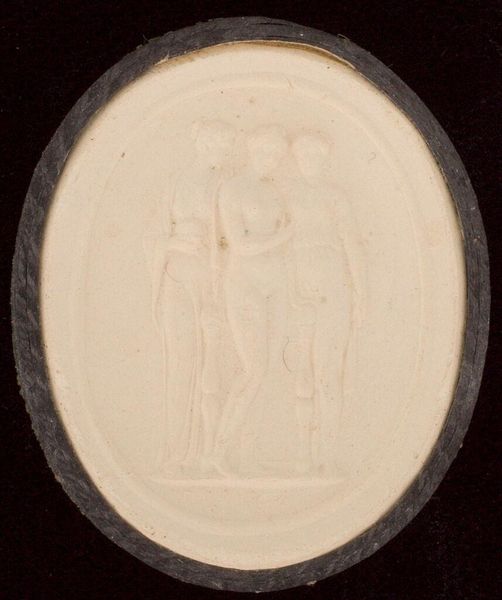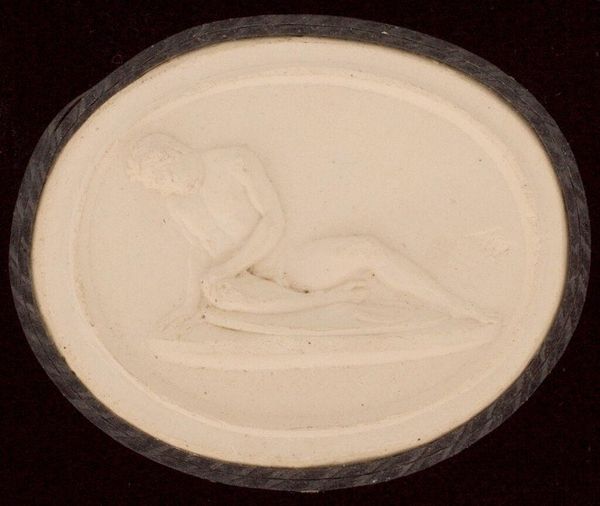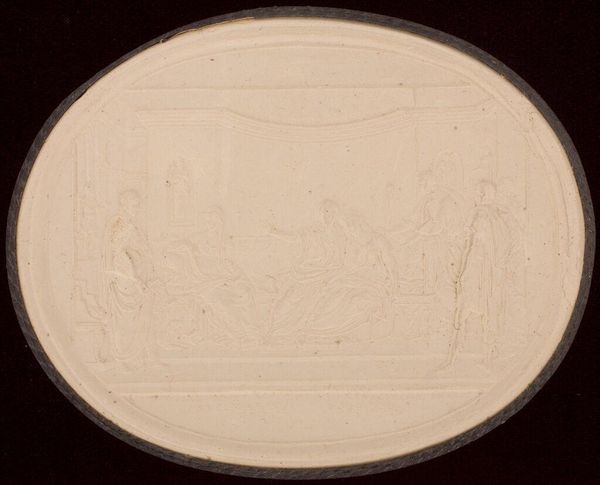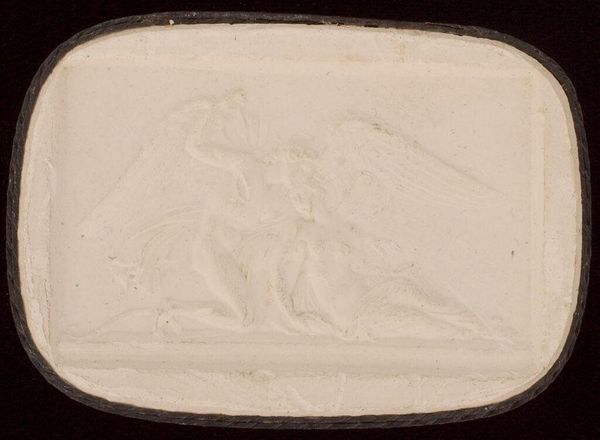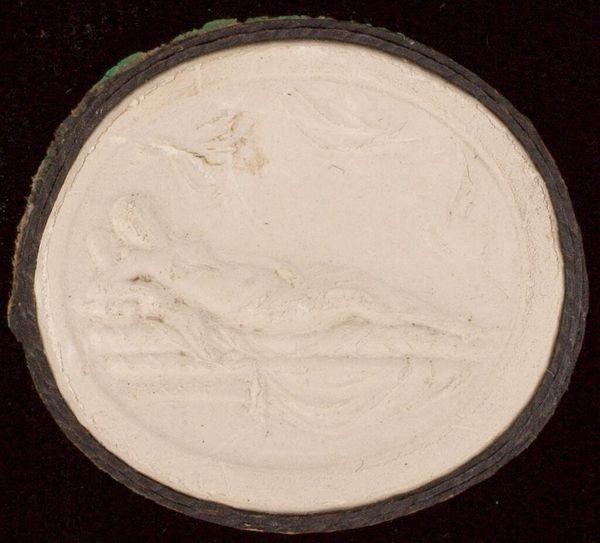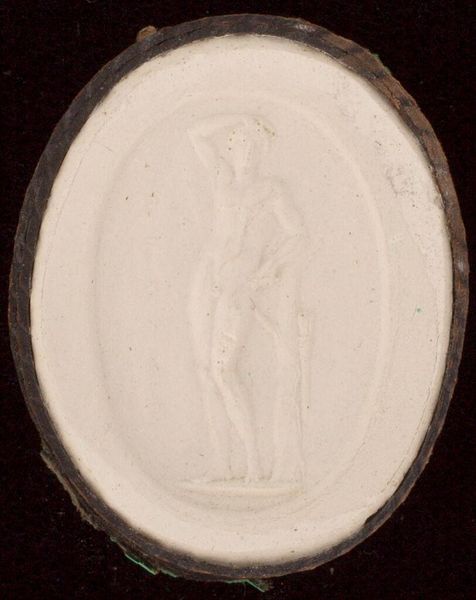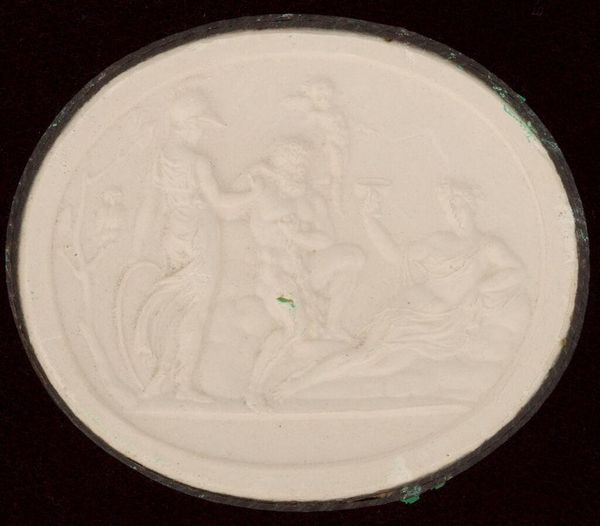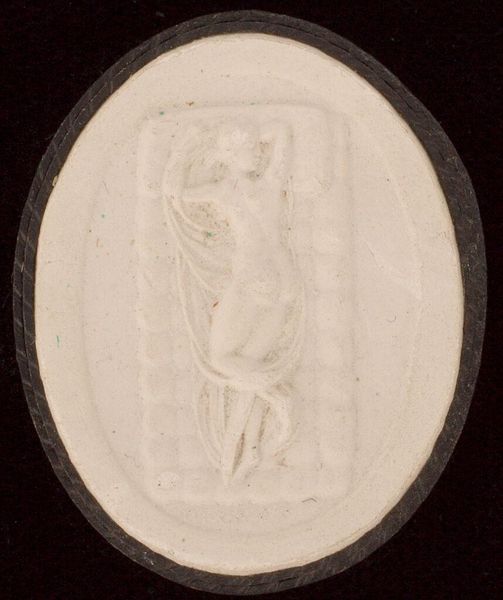
The Parting of Hector and Andromache, after Camuccini? c. 19th century
0:00
0:00
Dimensions: 4.2 x 6.2 x 1 cm (1 5/8 x 2 7/16 x 3/8 in.)
Copyright: CC0 1.0
Curator: This is Luigi Pichler’s miniature carving, "The Parting of Hector and Andromache, after Camuccini?" from around the 18th or 19th century. It resides here at the Harvard Art Museums. Editor: Wow, a tiny world holding so much grief! It's all swirling lines, figures barely there… it feels ephemeral, like a memory fading. Curator: Absolutely. Consider Pichler's labor: carving this heartbreaking scene into such a small piece, likely ivory or stone, really emphasizes the preciousness and fragility of the Trojan family. Editor: It's like he trapped the fleeting moment between "hello" and "goodbye" forever in this tiny, oval bubble. Does the size dictate the emotional intensity or diminish it? I'm torn. Curator: I think it heightens the intensity. The scene depicts a specific moment—Hector’s farewell before battle. The constraints of the medium speak to limits and sacrifice. Editor: Right, the limits of life, the sacrifices of war. It’s fascinating how the artist compressed such grand emotions into something so intimate. Curator: Yes, thinking about the labor intensifies the work's emotional punch, making us think about its purpose and audience. Editor: It's a reminder that even grand narratives are built from tiny, personal tragedies, isn't it? Curator: Precisely. The process and materiality provide a unique lens through which we view classical themes. Editor: Well, I'm off to ponder tiny tragedies and fleeting moments. Thanks!
Comments
No comments
Be the first to comment and join the conversation on the ultimate creative platform.
